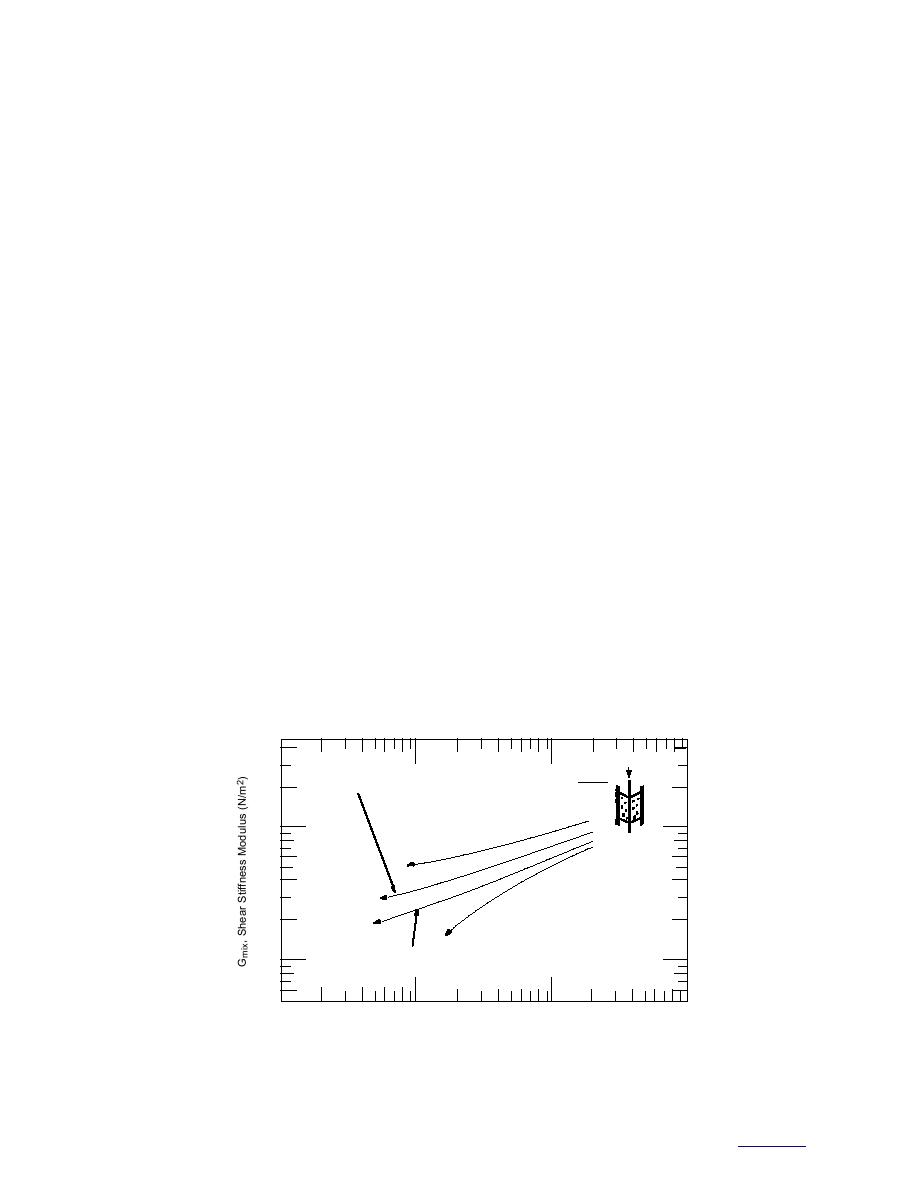
duction of stone matrix asphalt (SMA) mixtures
ing aggregate tests and asphalt concrete perfor-
in the USA.
mance (Kandhal and Parker 1998). The study,
To minimize rutting, aggregate interlock is
based only on laboratory evaluation, recom-
crucial. The shape, angularity, and surface texture
mended a set of aggregate tests that relate to rut-
of the aggregate affect the interlock. However, this
ting, fatigue cracking, raveling, and stripping
interlock appears to be critical for the fine aggre-
performance of HMA pavements (Table 1).
gates, as noted by Uge and Van de Loo (1974),
This report discusses test methods proposed by
who reported that use of rounded coarse aggre-
NCHRP for rutting susceptibility and focuses on
gate with crushed fine aggregate also produced
the two areas not covered by the NCHRP report:
rut-resistant HMA mixtures (Fig. 1). A discussion
skid resistance and freezethaw durability charac-
terization. The report also focuses on aggregate
of the various factors that affect pavement rutting
characterization and not on test methods that
can be found in Janoo (1990).
involve mixture testing.
The quantification of the shape, angularity,
and surface texture of an aggregate is difficult but
not impossible. Several methods involve either
PARAMETERS AND TESTS INDICATIVE
direct measurements of aggregate or indirect
OF RUTTING PERFORMANCE
inference from aggregate properties or from mix-
Particle shape, surface texture, particle size,
ture testing. For example, for coarse aggregates,
pore structure, and particle strength appear to be
engineers have developed visual classification
the most common characteristics cited for con-
methods to characterize shape and angularity or
trolling rutting.
index tests that use engineering properties such
Permanent flow or rutting from traffic loading
as porosity to speculate on the shape, angularity,
is due to densification and plastic flow of the
and surface texture of aggregates. In the index
HMA mixture at high temperatures. Factors such
test developed by engineers, however, it is not
as asphalt content, asphalt grade, air voids and
possible to quantify separately the shape, the
aggregate characteristics, construction practices,
angularity, or the surface texture. Usually they
temperature, and increase in traffic load/repeti-
are lumped together as geometric irregularities.
tions all have an influence on the rutting potential
Details on quantification of the shape, angularity,
of a mixture. Although all these factors are impor-
and surface texture of aggregates can be found in
tant, the effect of aggregates, which comprise up
Janoo (1998). For coarse aggregates, geologists
have a sophisticated system that involves physi-
to 90% of the mixture, plays a significant role in
cal measurement of the aggregates. As used by
controlling rutting, as seen by the recent intro-
4x108
τ mix
30% Crushed Materials (0/2 mm)
Gmix =
70% Rounded Materials (2/12 mm)
γ mix
107
100% Crushed Aggregates
100% Rounded Aggregates
25% Rounded Materials, 75% Crushed Materials
106
(2/12 mm)
(0.08/2 mm)
103
104
105
106
Sbit, Bitumen Stiffness Modulus (N/m2)
Figure 1. Influence of aggregate roundness on rutting potential of asphalt con-
crete mixtures.
2
to contents



 Previous Page
Previous Page
